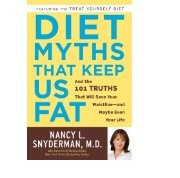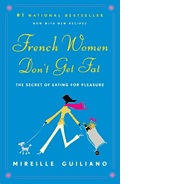 When I was 39, my doctor informed me that I had virtually no thyroid function left. I went screaming home and called my mother in a panic, and she calmly commented, “Of course your thyroid stopped working– you’re about the age when mine stopped working.” Okay, I thought to myself, thanks a heap for the heads-up. I realized that though I was generally aware of the medications my mother took, I had never noticed her taking thyroid supplements. She explained that in her era of stay-at-home Moms and bridge parties, her doctor had discouraged taking synthetic thyroid hormone and recommended that she “get more rest when she feels tired.” Uh-huh. We’ve come a long way, baby.
When I was 39, my doctor informed me that I had virtually no thyroid function left. I went screaming home and called my mother in a panic, and she calmly commented, “Of course your thyroid stopped working– you’re about the age when mine stopped working.” Okay, I thought to myself, thanks a heap for the heads-up. I realized that though I was generally aware of the medications my mother took, I had never noticed her taking thyroid supplements. She explained that in her era of stay-at-home Moms and bridge parties, her doctor had discouraged taking synthetic thyroid hormone and recommended that she “get more rest when she feels tired.” Uh-huh. We’ve come a long way, baby.
This episode taught me a couple of important things. First, it was time for a loooong conversation with Mom about health issues, which wasn’t easy; our parents come from a generation that was not raised to discuss intimate subjects, especially with their children. (Hopefully we’ll do better when it’s our turn.) I also learned to keep notes as my mother encountered health issues, as I was pretty sure I was getting previews of coming attractions. I was able to recognize the next inherited gift, lactose intolerance, without too much drama.
Nature Taketh Away, Abbott Labs Giveth Back
Once I realized that my thyroid had retired to a cottage in the Cotswolds where it was unavailable for my future metabolic needs, I wasted no time in starting on thyroid replacement hormone. To my delight, not only did I feel better, but five pounds dropped off like I’d taken off a backpack. Our systems run with such precision that it doesn’t take much slowing of your metabolism to put weight on. Your metabolism will slow as you age, but if you’ve gained a bunch of weight in a short time, and you can’t easily assign a cause (well, there was the leftover Halloween candy, then Thanksgiving, then Christmas…), see your doctor for a chat and a blood test.
Of course, the opposite is also true. I have a good friend who was skinny all her life no matter what she ate and how little exercise she got, until the day her doctor realized her thyroid was stuck in overdrive. What with the long list of ill effects of chronic hyperthyroidism (including heart failure), she started treatment and now has a weight problem because of the years of bad habits she got into when those habits had no visible consequences. The angel on my right shoulder compels me to tell her how glad I am that she is no longer in danger of dropping dead of a heart attack. I try to ignore the devil on my left shoulder shouting, “Hah! Welcome to MY world!” Dying is a steep price to pay for being thin.
If you are lucky enough to still have your Mom (and your Dad, especially if you know you take after his side of the family more), make a plan today to talk about family health history, even if you’ve done it before. As successive generations live longer, they may encounter health problems that their parents died too early to experience. And give your Mom a hug from me. I lost my Mom a few years ago, and I miss her. When I consider all the amazing things she gave me, I guess getting an underactive thyroid is part of a package deal I can live with.



 One of the oddest truths in modern American society is that a lot of poor people are fat. As I talked about in
One of the oddest truths in modern American society is that a lot of poor people are fat. As I talked about in



